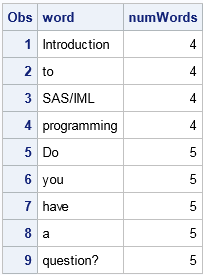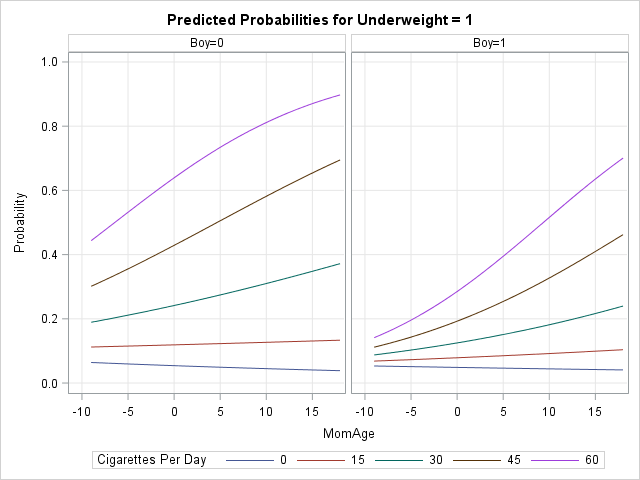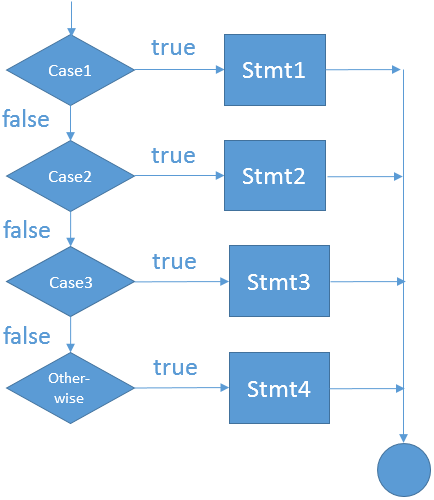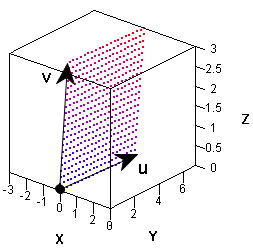The DO Loop
Statistical programming in SAS with an emphasis on SAS/IML programs
Last week I read an interesting paper by Bob Rodriguez: "Statistical Model Building for Large, Complex Data: Five New Directions in SAS/STAT Software." In it, Rodriguez summarizes five modern techniques for building predictive models and highlights recent SAS/STAT procedures that implement those techniques. The paper discusses the following high-performance (HP)

I'm addicted to you. You're a hard habit to break. Such a hard habit to break. — Chicago, "Hard Habit To Break" Habits are hard to break. For more than 20 years I've been putting semicolons at the end of programming statements in SAS, C/C++, and Java/Javascript. But lately I've been

Two of my favorite string-manipulation functions in the SAS DATA step are the COUNTW function and the SCAN function. The COUNTW function counts the number of words in a long string of text. Here "word" means a substring that is delimited by special characters, such as a space character, a

Graphs enable you to visualize how the predicted values for a regression model depend on the model effects. You can gain an intuitive understanding of a model by using the EFFECTPLOT statement in SAS to create graphs like the one shown at the top of this article. Many SAS regression

Every beginning SAS programmer learns the simple IF-THEN/ELSE statement for conditional processing in the SAS DATA step. The basic If-THEN statement handles two cases: if a condition is true, the program does one thing, otherwise the program does something else. Of course, you can handle more cases by using multiple

A grid is a set of evenly spaced points. You can use SAS to create a grid of points on an interval, in a rectangular region in the plane, or even in higher-dimensional regions like the parallelepiped shown at the left, which is generated by three vectors. You can use
